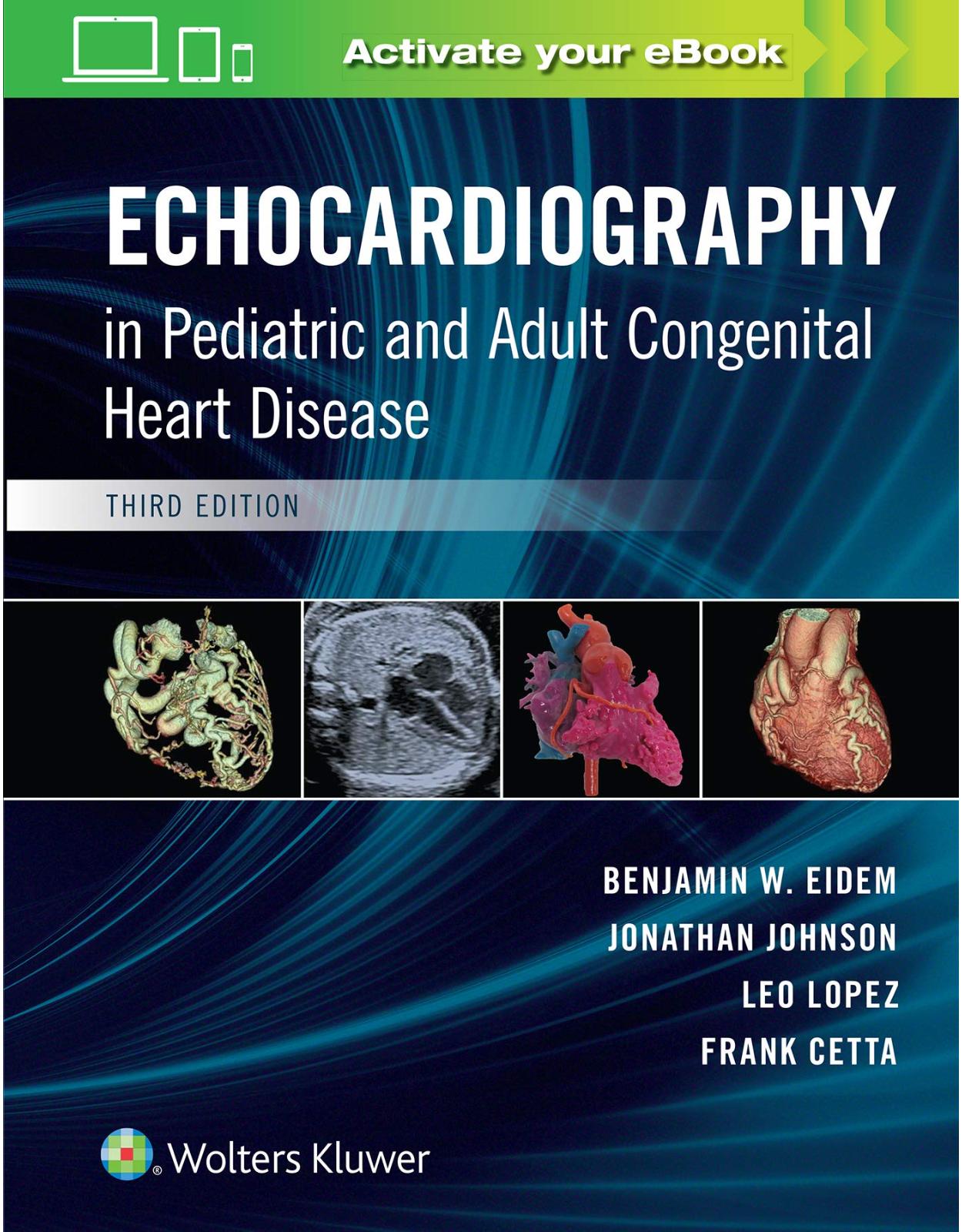
Echocardiography in Pediatric and Adult Congenital Heart Disease
Livrare gratis la comenzi peste 500 RON. Pentru celelalte comenzi livrarea este 20 RON.
Disponibilitate: La comanda in aproximativ 4 saptamani
Editura: LWW
Limba: Engleza
Nr. pagini: 800
Coperta: Hardcover
Dimensiuni: 21.59 x 3.18 x 28.58 cm
An aparitie: 1 Sept. 2020
Edited by expert clinicians at Mayo Clinic and other leading global institutions, Echocardiography in Pediatric and Adult Congenital Heart Disease remains your reference of choice in this fast-changing field. The Third Edition brings you fully up to date not only with all aspects of pediatric echocardiography, but also with multimodality imaging in adult congenital heart disease, making it an invaluable resource for cardiologists, fellows, internists, and radiologists, as well as pediatric echocardiographers and sonographers.
- Covers the full range of congenital and acquired heart abnormalities as well as valve prostheses and the transplanted heart, providing state-of-the-art knowledge to assess challenging cardiac lesions and physiology.
- Places increased emphasis on multimodality imaging (MR/CT), equipping you to better meet the inherent challenges of echo imaging for adults with repaired congenital heart disease.
- Includes board-style questions and answers for every chapter—perfect for exam review and self-assessment.
- Helps you obtain the maximum diagnostic value from today’s imaging approaches: tissue Doppler, 3D echo, intra-cardiac and intraoperative transesophageal echo, and cardiac MRI and MR angiography.
- Depicts the full range of echo findings with more than 800 illustrations (most in full-color), more correlative anatomic images, numerous tables, and over 200 videos online.
Enrich Your eBook Reading Experience
- Read directly on your preferred device(s), such as computer, tablet, or smartphone.
- Easily convert to audiobook, powering your content with natural language text-to-speech.
Table of Contents:
- Cover
- Title Page
- Copyright
- Dedication
- Contributors
- Preface
- Acknowledgements
- Contents
- 1 Principles of Cardiovascular Ultrasound
- INTRODUCTION
- WHAT IS ULTRASOUND?
- SOME DEFINITIONS
- IMAGE GENERATION
- COMMON IMAGING FORMATS AND IMAGING ARTIFACTS
- THE DOPPLER EFFECT AND CARDIOVASCULAR HEMODYNAMICS
- THE DOPPLER EQUATION
- RELATIONSHIP BETWEEN VELOCITY AND PRESSURE DIFFERENCES
- DOPPLER ECHOCARDIOGRAPHIC MODALITIES
- ACKNOWLEDGMENT
- SUGGESTED READING
- Chapter 1: Multiple Choice Question
- 2 Practical Issues Related to the Examination, Anatomic Image Orientation, and Segmental Cardiovascular Analysis
- INTRODUCTION
- GENERAL EXAMINATION GUIDELINES
- IMAGE ACQUISITION
- Approach to Abnormal Cardiac Positions/Complex Anatomy
- Transesophageal Imaging
- THE ECHOCARDIOGRAPHIC REPORT
- IMAGE ORIENTATION AND NOMENCLATURE IN CONGENITAL HEART DISEASE
- NOMENCLATURE OF CONGENITAL HEART DISEASE
- Situs or Sidedness
- Visceral Situs or Sidedness
- Atrial Situs or Sidedness
- TERMS USED TO DESCRIBE CARDIOVASCULAR SEGMENTS AND CONNECTIONS
- Some Synonyms
- SEQUENTIAL SEGMENTAL ANALYSIS OF CARDIOVASCULAR ANATOMY AND CONGENITAL CARDIAC MALFORMATIONS
- DETERMINATION OF CARDIAC LOCATION AND SITUS (SIDEDNESS)
- Abdominal Situs
- Atrial Situs
- SEGMENTS AND CONNECTIONS
- The Venous Segment
- The Atrial Segment
- The Atrioventricular Connection
- The Ventricular Segment
- The Ventricular–Great Arterial Connection
- The Great Arterial Segment
- ACKNOWLEDGMENT
- REFERENCES
- SUGGESTED READING
- Chapter 2: Multiple Choice Question
- 3 Quantitative Methods in Echocardiography—Basic Techniques
- Introduction
- ECHOCARDIOGRAPHIC ASSESSMENT OF GLOBAL SYSTOLIC VENTRICULAR FUNCTION
- Left Ventricular Shortening Fraction
- Left Ventricular Ejection Fraction
- Left Ventricular Mass
- VELOCITY OF CIRCUMFERENTIAL FIBER SHORTENING AND THE STRESS-VELOCITY INDEX
- Doppler Parameters of Left Ventricular Systolic Function
- Left Ventricular dP/dt
- Myocardial Performance Index (Tei Index)
- ECHOCARDIOGRAPHIC ASSESSMENT OF REGIONAL SYSTOLIC VENTRICULAR FUNCTION
- Two-Dimensional Imaging
- Tissue Doppler Imaging and Strain Rate Imaging
- ECHOCARDIOGRAPHIC ASSESSMENT OF DIASTOLIC VENTRICULAR FUNCTION
- Evaluation of Diastolic Ventricular Function—Technical Considerations
- Mitral Inflow Doppler
- Pulmonary Venous Doppler
- Patterns of Diastolic Dysfunction
- Clinical Utility of Diastology
- Qualitative Versus Quantitative Diastology
- Limitations and Pitfalls of Doppler Evaluation of Diastolic Ventricular Function
- NEWER ECHOCARDIOGRAPHIC TECHNIQUES TO EVALUATE DIASTOLIC VENTRICULAR FUNCTION
- Tissue Doppler Imaging
- Tissue Doppler Studies in Normal Children
- Color M-mode Flow Propagation Velocity
- Left Atrial Volume
- ECHOCARDIOGRAPHIC ASSESSMENT OF RIGHT VENTRICULAR FUNCTION
- Tricuspid Annular Plane Systolic Excursion
- Right Ventricular Myocardial Performance Index
- Right Ventricular dP/dt
- Right Ventricular Tissue Doppler Imaging
- Acoustic Quantification and Right Ventricular Function
- Three-Dimensional Echocardiography and Right Ventricular Function
- Evaluation of Right Ventricular Diastolic Function
- ECHOCARDIOGRAPHIC ASSESSMENT OF SINGLE VENTRICLE FUNCTION IN PATIENTS WITH COMPLEX CONGENITAL HEART DISEASE
- SUGGESTED READING
- Chapter 3: Multiple Choice Question
- 4 Quantitative Methods in Echocardiography—Advanced Techniques in the Assessment of Ventricular Function
- THREE-DIMENSIONAL ECHOCARDIOGRAPHY IN FUNCTIONAL ASSESSMENT
- From Reconstruction Techniques to Real-Time Three-Dimensional Imaging
- Technical Aspects
- Imaging Protocols
- Clinical Applications
- Future Directions
- TISSUE-DOPPLER IMAGING FOR THE EVALUATION OF MYOCARDIAL FUNCTION
- Current Clinical Applications of Tissue Velocities
- Use of Tissue-Doppler Velocities in Children
- Deformation Imaging in Pediatric and Congenital Heart Disease
- Normative Myocardial Deformation Data in Children
- Clinical Applications of Myocardial Deformation Imaging in Pediatric Heart Disease
- MAGNETIC RESONANCE IMAGING FOR THE ASSESSMENT OF VENTRICULAR FUNCTION
- Cardiac Magnetic Resonance Techniques Used for the Assessment of Ventricular Function
- Cardiac Magnetic Resonance to Assess Ventricular Function
- Clinical Applications
- Acquisition Protocols
- Data Analysis
- Problems and Potential Solutions
- Future Applications
- CONCLUSION
- SUGGESTED READING
- Chapter 4: Multiple Choice Question
- 5 Cardiac Electromechanical Dyssynchrony in Patients With Congenital Heart Disease
- INTRODUCTION
- PATHOPHYSIOLOGY OF ELECTROMECHANICAL DYSSYNCHRONY AND BASIC PRINCIPLES OF CRT
- CRT IN PEDIATRIC AND CONGENITAL HEART DISEASE
- ATRIOVENTRICULAR, INTERVENTRICULAR, AND INTRAVENTRICULAR DYSSYNCHRONY
- Atrioventricular Dyssynchrony
- Interventricular Dyssynchrony
- Intraventricular Dyssynchrony
- CRT IN PATIENTS WITH A BIVENTRICULAR CIRCULATION AND SYSTEMIC LEFT VENTRICLE
- The Failing Systemic Left Ventricle
- The Failing Subpulmonary Right Ventricle
- CRT IN PATIENTS WITH A BIVENTRICULAR CIRCULATION AND SYSTEMIC RIGHT VENTRICLE
- CRT IN PATIENTS WITH A SINGLE VENTRICLE
- PATIENT SELECTION FOR CRT IN CONGENITAL HEART DISEASE
- SUGGESTED READING
- 6 Anomalies of the Pulmonary and Systemic Venous Connections
- ANOMALOUS PULMONARY VENOUS CONNECTIONS
- Introduction, Nomenclature, and Embryogenesis
- Transthoracic Imaging of Pulmonary Venous Connections
- Total Anomalous Pulmonary Venous Connection
- Fetal Imaging of TAPVC
- Partial Anomalous Pulmonary Venous Connections
- TEE Imaging of Normal Pulmonary Venous Connections
- TEE Imaging of PAPVC
- Postoperative Echocardiography in PAPVC
- ANOMALOUS SYSTEMIC VENOUS CONNECTIONS
- Introduction, Nomenclature, and Embryogenesis
- SUGGESTED READING
- Chapter 6: Multiple Choice Question
- 7 Abnormalities of Atria and Atrial Septation
- ATRIAL SEPTAL ANATOMY AND EMBRYOLOGY
- ATRIAL SEPTAL DEFECT
- Clinical Presentation
- Physiology
- Complications
- EVALUATION OF ATRIAL SEPTAL DEFECT: OVERVIEW
- Subcostal Imaging
- Parasternal Views
- Apical 4-Chamber View
- Suprasternal Notch Views
- Additional Imaging
- TWO-DIMENSIONAL ECHO ANATOMY AND IMAGING
- Patent Foramen Ovale
- Secundum Atrial Septal Defect
- Sinus Venosus Defect With Partial Anomalous Pulmonary Venous Connection
- Coronary Sinus Atrial Septal Defect (Unroofed Coronary Sinus)
- Associated Defects
- Interventional and PostInterventional Imaging
- COR TRIATRIATUM
- Background
- Clinical Presentation
- Two-Dimensional Echo Anatomy and Imaging
- Subcostal Views
- Parasternal Views
- Apical View
- Suprasternal Notch Views
- Postoperative Assessment of Cor Triatriatum
- COR TRIATRIATUM DEXTER
- SUGGESTED READING
- Chapter 7: Multiple Choice Question
- 8 Atrioventricular Septal Defects
- INTRODUCTION
- TERMINOLOGY AND CLASSIFICATION
- ANATOMIC FEATURES OF AVSD
- Level of Atrioventricular Valve Insertion
- Elongate Left Ventricular Outflow Tract
- Cleft Left Atrioventricular Valve
- Counterclockwise Rotated Papillary Muscles
- ECHOCARDIOGRAPHIC EVALUATION OF AVSD
- Primum Atrial Septal Defect
- Mitral Valve Abnormalities
- Left Ventricular Outflow Tract Obstruction
- UNBALANCED AVSD
- RASTELLI CLASSIFICATION OF THE COMMON ATRIOVENTRICULAR VALVE
- LESIONS ASSOCIATED WITH AVSD
- DOWN SYNDROME AND AVSD
- FETAL ECHO ASSESSMENT OF AVSD
- SURGICAL REPAIR AND POSTOPERATIVE ECHO
- Partial AVSD
- Complete AVSD
- Postoperative Echocardiographic Surveillance
- SUMMARY
- SUGGESTED READING
- Chapter 8: Multiple Choice Question
- 9 Ebstein Malformation and Tricuspid Valve Diseases
- INTRODUCTION
- ON THE NAMING OF THE TRICUSPID VALVAR APPARATUS
- Ebstein Malformation
- DEFINITION AND ANATOMIC FEATURES OF EBSTEIN MALFORMATION
- CLINICAL PRESENTATION OF EBSTEIN MALFORMATION
- ASSOCIATED CARDIOVASCULAR ABNORMALITIES
- ECHOCARDIOGRAPHIC RECOGNITION AND EVALUATION OF EBSTEIN MALFORMATION
- PRENATAL DETECTION OF EBSTEIN MALFORMATION
- Other Tricuspid Valve Disorders
- ACKNOWLEDGMENTS
- SUGGESTED READING
- Chapter 9: Multiple Choice Question
- 10 Echocardiographic Assessment of Mitral Valve Abnormalities
- INTRODUCTION
- MITRAL VALVE EMBRYOLOGY AND GENETICS
- ANATOMY OF THE MITRAL VALVE
- Mitral Annular Shape and Function
- Mitral Valve Leaflets
- Tension Apparatus
- MITRAL VALVE ABNORMALITIES
- Incidence of Congenital Mitral Valve Abnormalities
- SPECIFIC CONGENITAL MITRAL VALVE ABNORMALITIES
- Mitral Valve Dysplasia, Hypoplasia, and Atresia
- Supravalvar Mitral Ring
- Parachute Mitral Valve
- Mitral Valve Arcade
- Double-Orifice Mitral Valve
- Straddling Mitral Valve
- Isolated Mitral Valve Cleft
- Mitral Valve Prolapse
- Dysplasia of the Posterior Mitral Valve Leaflet
- ACQUIRED MITRAL VALVE DISEASE
- Degenerative Mitral Valve
- Flail Leaflet
- Perturbations in Valve Function in the Premature Infant
- Systolic Anterior Motion in Obstructive Hypertrophic Cardiomyopathy
- Aortic Valve Insufficiency–Induced Mitral Restriction
- Libman-Sacks Endocarditis
- Infective Endocarditis of the Mitral Valve
- MITRAL VALVE INTERVENTIONS
- Interventions for Mitral Valve Pathology
- FUTURE DIRECTIONS
- 3D Printing and Fetal Imaging
- Opportunities for Collaboration with Veterinary Cardiology
- SUGGESTED READING
- Chapter 10: Multiple Choice Question
- 11 Congenitally Corrected Transposition of the Great Arteries
- INTRODUCTION
- ECHOCARDIOGRAPHIC ASSESSMENT
- ASSOCIATED CARDIAC LESIONS
- NATURAL HISTORY
- ASSESSMENT OF THE SYSTEMIC RIGHT VENTRICLE
- SUGGESTED READING
- Chapter 11: Multiple Choice Question
- 12 Ventricular Septal Defects
- INTRODUCTION
- ANATOMY OF THE VENTRICULAR SEPTUM
- ANATOMY OF VENTRICULAR SEPTAL DEFECTS
- ECHOCARDIOGRAPHIC ASSESSMENT OF VENTRICULAR SEPTAL DEFECTS
- Ventricular Septal Defect Location
- Special Considerations
- Assessment of Ventricular Septal Defect Size
- Evaluation of Right Heart Pressures
- Quantification of Shunt Flow
- CLOSURE OF VENTRICULAR SEPTAL DEFECTS
- Spontaneous Closure
- Surgical Repair
- Transcatheter and Hybrid Perventricular Device Closure
- ECHOCARDIOGRAPHY OF POSTOPERATIVE VENTRICULAR SEPTAL DEFECTS
- VENTRICULAR SEPTAL DEFECTS IN THE FETUS
- TRANSESOPHAGEAL ECHOCARDIOGRAPHY OF VENTRICULAR SEPTAL DEFECTS
- SUGGESTED READING
- Chapter 12: Multiple Choice Question
- 13 Univentricular Atrioventricular Connections
- INTRODUCTION
- TRICUSPID ATRESIA
- Associated Anomalies
- Clinical History
- Echocardiographic Examination of Tricuspid Atresia
- HYPOPLASTIC LEFT HEART SYNDROME
- Anatomy
- Clinical Presentation
- Echocardiography in Hypoplastic Left Heart Syndrome
- Role of 3-Dimensional Echocardiography in Hypoplastic Left Heart Syndrome
- RIGHT VENTRICULAR FUNCTIONAL ASSESSMENT IN HYPOPLASTIC LEFT HEART SYNDROME
- VENTRICULOCORONARY ARTERY CONNECTIONS IN HYPOPLASTIC LEFT HEART SYNDROME
- Borderline Left Ventricle
- DOUBLE-INLET LEFT VENTRICLE
- Anatomy of Double-Inlet Left Ventricle
- Double-Inlet Left Ventricle with Transposed Great Arteries (Hypoplastic Subaortic Right Ventricle)
- Double-Inlet Left Ventricle with Normally Related Great Arteries
- Clinical Presentation
- Echocardiographic Evaluation of Double-Inlet Left Ventricle
- Interventricular Communication in Double-Inlet Left Ventricle or Tricuspid Atresia with Ventriculoarterial Discordance
- APPROACH TO THE PATIENT WITH UNIVENTRICULAR ATRIOVENTRICULAR CONNECTION: SURGICAL PLANNING
- The Neonate With Excessive Pulmonary Blood Flow
- Echocardiographic Evaluation of Pulmonary Artery Band
- The Neonate With Restricted Pulmonary Blood Flow
- “The Balanced Infant”
- The Neonate With Restricted Systemic Blood Flow
- Modified Norwood Procedure
- The Hybrid Procedure
- Echocardiographic Evaluation Following Stage 1 Norwood Procedure
- Echocardiographic Evaluation Following Hybrid Procedure
- Echocardiographic Evaluation of the Bidirectional Cavopulmonary (Glenn) Anastomosis
- Echocardiographic Evaluation of the Fontan Circulation
- SUMMARY
- SUGGESTED READING
- Chapter 13: Multiple Choice Question
- 14 Abnormalities of Right Ventricular Outflow
- VALVAR PULMONARY STENOSIS
- Background
- Principles of Echocardiographic Anatomy and Imaging
- SUBVALVAR PULMONARY STENOSIS
- Background
- Principles of Echocardiographic Anatomy and Imaging
- SUPRAVALVAR PULMONARY STENOSIS
- Background
- Principles of Echocardiographic Anatomy and Imaging
- PULMONARY REGURGITATION
- Background
- Principles of Echocardiographic Anatomy and Imaging
- PULMONARY ATRESIA WITH INTACT VENTRICULAR SEPTUM
- Background
- Principles of Echocardiographic Anatomy and Imaging
- POTENTIAL ROLES FOR ALTERNATIVE IMAGING MODALITIES IN RIGHT VENTRICULAR OUTFLOW TRACT ABNORMALITIES
- Right Ventricular Size and Function
- Physiologic Measures
- Imaging of Pulmonary Artery Anatomy
- SUGGESTED READING
- Valvar Pulmonary Stenosis
- Subvalvar Pulmonary Stenosis
- Supravalvar Pulmonary Stenosis
- Pulmonary Regurgitation
- Pulmonary Atresia with Intact Ventricular Septum
- Alternative Imaging Modalities in Right Ventricular Outflow Tract Obstruction
- Chapter 14: Multiple Choice Question
- 15 Abnormalities of Left Ventricular Outflow
- INTRODUCTION
- CLINICAL PRESENTATION
- NORMAL ANATOMY
- ABNORMAL ANATOMY AND COMMON ASSOCIATIONS
- Valvar Aortic Stenosis
- Subvalvar Aortic Stenosis
- Supravalvar Aortic Stenosis
- Aortic Regurgitation
- Aneurysm of the Proximal Aorta
- APPROACH TO TRANSTHORACIC ECHOCARDIOGRAPHY
- Valvar Aortic Stenosis
- Neonatal Critical Valvar Aortic Stenosis
- Subvalvar Aortic Stenosis
- Supravalvar Aortic Stenosis
- Aortic Regurgitation
- Aneurysm of the Proximal Aorta
- FETAL ECHOCARDIOGRAPHY
- TRANSESOPHAGEAL ECHOCARDIOGRAPHY
- POSTOPERATIVE AND POSTINTERVENTIONAL ECHOCARDIOGRAPHY
- Residual Left Ventricular Outflow Tract Obstruction
- Residual or Postintervention Aortic Regurgitation
- Left Ventricular Size and Function
- Size of the Proximal Aorta
- Prosthetic Aortic Valve Function
- Alternative Imaging Modalities
- SUGGESTED READING
- Chapter 15: Multiple Choice Question
- 16 Tetralogy of Fallot
- INTRODUCTION
- VENOUS CONNECTIONS
- ATRIAL SEPTUM
- ATRIOVENTRICULAR CONNECTIONS
- VENTRICULAR SEPTAL DEFECT
- Physiologic Assessment
- Ventriculoarterial Connections
- The Right Ventricular Outflow Tract
- Pulmonary Valve
- Great Arteries
- Coronary Arteries
- TETRALOGY OF FALLOT WITH ABSENT PULMONARY VALVE SYNDROME
- PULMONARY ATRESIA WITH VENTRICULAR SEPTAL DEFECT
- SURGICAL MANAGEMENT OF TETRALOGY OF FALLOT
- SURGICAL REPAIR OF TETRALOGY OF FALLOT
- POSTOPERATIVE ECHOCARDIOGRAPHIC EXAMINATION
- Residual Shunts
- Assessment of the Right Ventricular Outflow Tract
- Assessment of Right Ventricular Systolic Function
- Fractional Area Change
- Tricuspid Annular Systolic Plane Excursion
- Myocardial Performance Index
- Tissue Doppler Imaging
- Strain and Strain Rate Imaging
- Three-Dimensional Echocardiography
- Assessment of Right Ventricular Diastolic Function
- CONCLUSION
- SUGGESTED READING
- Chapter 16: Multiple Choice Question
- 17 d -Transposition of the Great Arteries
- CLINICAL PRESENTATION
- ANATOMY AND PHYSIOLOGY
- INTERVENTIONAL AND SURGICAL MANAGEMENT
- BASICS OF ECHOCARDIOGRAPHIC ANATOMY AND IMAGING
- COMMON ASSOCIATED LESIONS AND FINDINGS THAT ALTER CLINICAL MANAGEMENT
- INTERVENTIONAL AND POSTINTERVENTIONAL IMAGING
- Preoperative Cardiac Catheterization
- Intraoperative Imaging
- Postoperative Imaging: Arterial Switch Operation
- Postoperative Imaging: Atrial Switch Operation (Mustard or Senning Procedure)
- Postoperative Imaging: Rastelli and Nikaidoh Procedures
- POTENTIAL ROLES OF ADDITIONAL IMAGING MODALITIES
- Preoperative Evaluation
- Postoperative Evaluation
- SUGGESTED READING
- Chapter 17: Multiple Choice Question
- 18 Double-Outlet Right and Left Ventricles
- TERMINOLOGY
- DOUBLE-OUTLET RIGHT VENTRICLE
- Double-Outlet Right Ventricle With Side-by-Side Great Arteries and Subaortic Ventricular Septal Defect
- IMAGING NOTES
- Position of the Great Arteries
- Position of the Ventricular Septal Defect
- CORONARY ANOMALIES
- PHYSIOLOGY
- SURGICAL TREATMENT
- DOUBLE-OUTLET LEFT VENTRICLE
- Surgical Correction of Double-Outlet Left Ventricle
- SUGGESTED READING
- Chapter 18: Multiple Choice Question
- 19 Truncus Arteriosus
- INTRODUCTION
- DEVELOPMENT AND ANATOMY
- CLINICAL PRESENTATION
- ASSOCIATED CONDITIONS
- ECHOCARDIOGRAPHIC FEATURES
- Two-Dimensional Echocardiographic Examination
- Doppler Echocardiographic Examination
- Preoperative Echocardiographic Evaluation of Truncus Arteriosus
- Postoperative Echocardiographic Evaluation of Truncus Arteriosus
- SUMMARY
- SUGGESTED READING
- Chapter 19: Multiple Choice Question
- 20 Patent Ductus Arteriosus and Aortopulmonary Window
- PATENT DUCTUS ARTERIOSUS
- Two-Dimensional Echocardiography
- Morphologic Variations in Patent Ductus Arteriosus
- Ductal Origin of the Pulmonary Artery and Ductal Tissue Continuation of Branch Pulmonary Arteries
- Hemodynamic Consequences of a Patent Ductus Arteriosus
- Doppler Examination
- Transesophageal Echocardiography
- Ductal Aneurysm
- Echocardiographic Limitations in Imaging the Patent Ductus Arteriosus
- Echocardiographic Evaluation After Ductal Stent Placement
- Echocardiographic Evaluation After Device Closure or Surgical Ligation of Patent Ductus Arteriosus
- AORTOPULMONARY WINDOW
- Two-Dimensional Echocardiography
- Doppler Echocardiography
- Echocardiographic Evaluation After Closure of an Aortopulmonary Window
- SUGGESTED READING
- Chapter 20: Multiple Choice Question
- 21 Abnormalities of the Aortic Arch
- INTRODUCTION
- ABNORMALITIES OF BRACHIOCEPHALIC BRANCHING
- Echocardiographic Assessment of the Aortic Arch
- VASCULAR RINGS
- Left Aortic Arch With Aberrant Right Subclavian Artery
- Right Aortic Arch With Aberrant Left Subclavian Artery
- Right Aortic Arch With Retroesophageal Segment and Left Descending Aorta
- Double Aortic Arch
- Pulmonary Artery Sling
- Additional Imaging Modalities
- COARCTATION OF THE AORTA
- Two-Dimensional Imaging of Coarctation
- Doppler Features of Coarctation
- Imaging Following Coarctation Repair
- Interrupted Aortic Arch
- ACKNOWLEDGMENT
- Key Points
- SUGGESTED READING
- Chapter 21: Multiple Choice Question
- 22 Marfan Syndrome: Aortic Aneurysm and Dissection
- INTRODUCTION
- ANATOMY AND PHYSIOLOGY OF THE CARDIAC LESION
- CLINICAL PRESENTATION
- Marfan Syndrome in Children
- CARDIAC COMPLICATIONS IN MARFAN SYNDROME
- Cardiac Surgical Intervention
- Pregnancy in Patients With MFS
- BASICS OF ECHOCARDIOGRAPHIC ANATOMY AND IMAGING
- Two-Dimensional Echocardiographic Anatomy and Hemodynamics
- Echocardiographic Assessment of Aortic Dissection
- How to Obtain Proper Echocardiographic and Doppler Images
- ILLUSTRATIVE IMAGING EXAMPLES
- Case 1: Aortic Root Enlargement in a Patient With MFS
- Case 2: Mitral Valve Prolapse and Mitral Regurgitation in a Patient With MFS
- Case 3: Imaging after Aortic Root and Valve Replacement in a Patient With MFS
- Differential Diagnoses
- Potential Imaging Pitfalls
- Variations on Classic Anatomy
- Common Associated Lesions and Findings
- Key Findings That Alter Clinical Management
- Interventional and Postinterventional Imaging
- Potential Roles of Alternative Imaging Modalities
- SUMMARY
- SUGGESTED READING
- Chapter 22: Multiple Choice Question
- 23 Hypertrophic Cardiomyopathy
- INTRODUCTION
- DIAGNOSIS OF AND CLASSIFICATION SYSTEMS FOR HYPERTROPHIC CARDIOMYOPATHY
- ECHOCARDIOGRAPHIC IMAGING IN HYPERTROPHIC CARDIOMYOPATHY
- DOPPLER ECHOCARDIOGRAPHY
- ASSESSMENT OF DIASTOLIC DYSFUNCTION
- ROLE OF ECHOCARDIOGRAPHY DURING AND AFTER SURGICAL INTERVENTIONS
- SUGGESTED READING
- Chapter 23: Multiple Choice Question
- 24 Additional Cardiomyopathies
- INTRODUCTION
- CLASSIFICATION OF CARDIOMYOPATHY
- GENETICS OF CARDIOMYOPATHY AMONG CHILDREN
- CHARACTERIZATION OF CARDIOMYOPATHIES
- DILATED CARDIOMYOPATHY
- CAUSES AND PREVALENCE OF DCM
- THE CARDIAC CYTOSKELETON
- GENETICS OF DCM
- CLINICAL FEATURES OF DCM
- TWO-DIMENSIONAL ECHOCARDIOGRAPHIC EVALUATION OF DCM
- TISSUE DOPPLER IMAGING VELOCITIES IN DCM PATIENTS
- MYOCARDIAL PERFORMANCE INDEX (TEI INDEX)
- DP/DT MEASUREMENT AND FLOW PROPAGATION
- STRAIN RATE IMAGING IN DCM
- TREATMENT OF DCM
- MECHANICAL DYSSYNCHRONY AND DCM
- ECHOCARDIOGRAPHIC PREDICTORS OF OUTCOMES IN CHILDREN WITH DCM
- MYOCARDITIS
- RESTRICTIVE CARDIOMYOPATHY
- LEFT VENTRICULAR NONCOMPACTION CARDIOMYOPATHY
- ECHOCARDIOGRAPHIC FEATURES OF LVNC
- ARRHYTHMOGENIC RIGHT VENTRICULAR DYSPLASIA
- DILATED CARDIOMYOPATHY ASSOCIATED WITH DUCHENNE MUSCULAR DYSTROPHY
- STORAGE DISORDERS ASSOCIATED WITH CARDIOMYOPATHY
- CHAGAS DISEASE
- POSPARTUM CARDIOMYOPATHY
- ANTHRACYCLINE-INDUCED CARDIOMYOPATHY
- ARRHYTHMIA-INDUCED CARDIOMYOPATHY
- TAKOTSUBO CARDIOMYOPATHY
- RESPONSE OF DILATED CARDIOMYOPATHY TO ASSIST DEVICES
- FETAL ECHOCARDIOGRAPHIC DIAGNOSIS OF CARDIOMYOPATHY
- CONCLUSIONS
- SUGGESTED READING
- Chapter 24: Multiple Choice Question
- 25 Pericardial Disorders
- INTRODUCTION
- CONGENITALLY ABSENT PERICARDIUM
- PERICARDIAL CYST
- PERICARDIAL EFFUSION/TAMPONADE
- Pericardial Effusion Versus Pleural Effusion
- Echocardiographically Guided Pericardiocentesis
- CONSTRICTIVE PERICARDITIS
- Pitfalls and Caveats
- Restriction Versus Constriction
- EFFUSIVE-CONSTRICTIVE PERICARDITIS
- TRANSIENT CONSTRICTIVE PERICARDITIS
- PERICARDIAL EFFUSION ASSOCIATED WITH MALIGNANCY
- TRANSESOPHAGEAL ECHOCARDIOGRAPHY
- CLINICAL IMPACT
- SUGGESTED READING
- Chapter 25: Multiple Choice Question
- 26 Systemic Diseases
- INTRODUCTION
- RHEUMATIC FEVER
- Goals of Imaging
- Rheumatic Mitral Valve Disease
- Rheumatic Aortic Valve Disease
- KAWASAKI DISEASE
- Goals of Imaging
- AUTOIMMUNE DISEASES
- Pericardial Involvement
- Myocardial and Coronary Artery Involvement
- Valvar Involvement
- Pulmonary Vascular Involvement
- Systemic Vascular Involvement
- Neonatal Lupus Erythematosus
- HUMAN IMMUNODEFICIENCY VIRUS INFECTION
- Pericardial Involvement
- Myocardial Involvement
- Coronary Artery Involvement
- Valvar Involvement
- Pulmonary Vascular Involvement
- Large-Vessel Arteriopathy
- Cardiac Tumors
- METABOLIC SYNDROME
- Structural Changes
- Functional Changes
- Goals of Imaging
- CARDIAC DISEASES IN CANCER PATIENTS
- Myocardial Involvement
- Pericardial Involvement
- Valvar and Endocardial Involvement
- Secondary Involvement of the Heart
- Goals of Imaging
- MYOCARDITIS
- Goals of Imaging
- SICKLE CELL DISEASE
- Goals of Imaging
- CHRONIC KIDNEY DISEASE
- SUGGESTED READING
- Chapter 26: Multiple Choice Question
- 27 Vascular Abnormalities
- ARTERIOVENOUS MALFORMATIONS
- Systemic Arteriovenous Malformations
- Pulmonary Arteriovenous Malformations
- CORONARY ARTERY ABNORMALITIES
- Echocardiography
- Anomalous Origin of a Coronary Artery From the Pulmonary Artery
- Anomalous Aortic Origin of a Coronary Artery From the Opposite Sinus of Valsalva
- Coronary Artery Fistulas
- Coronary Artery Aneurysms
- Kawasaki Disease
- SUGGESTED READING
- Chapter 27: Multiple Choice Question
- 28 Cardiac Tumors
- INTRODUCTION
- RHABDOMYOMA
- MYXOMA
- FIBROMA
- HETEROTOPIAS AND GERM CELL TUMORS
- HEMANGIOMA
- PAPILLARY FIBROELASTOMA AND LAMBL EXCRESCENCES
- PARAGANGLIOMA
- MALIGNANT CARDIAC TUMORS
- NONNEOPLASTIC CARDIAC MASSES
- SUGGESTED READING
- Chapter 28: Multiple Choice Question
- 29 Evaluation of the Transplanted Heart
- ABBREVIATIONS
- INTRODUCTION
- History
- Current Incidence and Outcomes
- Importance of Echocardiography
- ECHO EVALUATION PRIOR TO TRANSPLANT
- Evaluation of Potential Donors
- Evaluation of Potential Recipients
- ECHO EVALUATION DURING TRANSPLANT
- Intraoperative TEE
- Residual Cardiac Lesions
- ECHO EVALUATION AFTER TRANSPLANT
- Acute Allograft Rejection
- Common Findings of Rejection
- Echo Markers When Rejection is Not Obvious
- Long-Term Follow-up of Residual Lesions
- Monitoring During Biopsy
- Home Monitoring Programs
- CORONARY ARTERY VASCULOPATHY
- Intravascular Ultrasound
- Stress Echocardiography
- SUMMARY
- SUGGESTED READING
- Chapter 29: Multiple Choice Question
- 30 Pulmonary Hypertension
- LEARNING OBJECTIVES
- BACKGROUND AND EPIDEMIOLOGY
- ECHOCARDIOGRAPHIC ASSESSMENT OF HEMODYNAMICS IN PULMONARY HYPERTENSION
- Indirect Signs of Pulmonary Hypertension
- Doppler Assessment of Pulmonary Artery Pressures in Pulmonary Hypertension
- Doppler Estimates of Pulmonary Vascular Resistance
- EVALUATION OF RIGHT VENTRICLE–PULMONARY ARTERY COUPLING AND RIGHT VENTRICULAR FUNCTION
- Assessment of the Cardiopulmonary Unit
- Assessment of Right Ventricular Function
- POPULATIONS AT RISK FOR PULMONARY HYPERTENSION
- Premature Infants With Bronchopulmonary Dysplasia
- Screening for Pulmonary Hypertension in Other Populations
- OTHER ANATOMIC CONSIDERATIONS
- Key Points
- SUGGESTED READING
- Chapter 30: Multiple Choice Question
- 31 Echocardiography in the Diagnosis and Management of Endocarditis
- BACKGROUND
- RISK FACTORS
- PATHOGENESIS
- CLINICAL PRESENTATION
- COMPLICATIONS
- DIAGNOSIS
- MANAGEMENT
- PROGNOSIS
- PROPHYLAXIS
- IMPORTANT ECHOCARDIOGRAPHIC CONSIDERATIONS
- Vegetations
- Abscesses and Fistulae
- Embolism, Ventricular Dysfunction, and Pericarditis
- Prosthetic Valves and Conduits
- Role of Transesophageal and Intracardiac Echocardiography and Other Imaging Modalities
- IMPORTANT ECHOCARDIOGRAPHIC SUGGESTIONS
- SUGGESTED READING
- Chapter 31: Multiple Choice Question
- 32 Evaluation of Prosthetic Valves
- Introduction
- EVALUATION OF THE MITRAL PROSTHESIS
- EVALUATION OF THE AORTIC PROSTHESIS
- EVALUATION OF TRICUSPID AND PULMONARY PROSTHESES
- PERCUTANEOUS VALVE IMPLANTATION
- PROSTHESIS-PATIENT MISMATCH
- PRESSURE RECOVERY
- SUGGESTED READING
- Chapter 32: Multiple Choice Question
- 33 Fetal Echocardiography
- Introduction
- INDICATIONS FOR FETAL ECHOCARDIOGRAPHY
- TIMING OF FETAL ECHOCARDIOGRAPHY
- SYSTEMATIC APPROACH
- Fetal Position
- Echocardiographic Imaging of the Great Arteries
- Longitudinal Views
- DETECTION RATES OF FETAL CARDIAC ABNORMALITIES
- MEASUREMENTS OF THE FETAL HEART
- FETAL CARDIAC FUNCTION
- FETAL ECHOCARDIOGRAPHY AND MRI
- FETAL ARRHYTHMIAS
- MANAGEMENT FOLLOWING A PRENATAL DIAGNOSIS OF CHD
- IMPACT ON OUTCOME
- FETAL INTERVENTION
- SUGGESTED READING
- Chapter 33: Multiple Choice Question
- 34 Three-Dimensional Echocardiography in Congenital Heart Disease
- INTRODUCTION
- INSTRUMENTATION AND WORKFLOW
- DATA ACQUISITION MODES AND PRINCIPLES OF ACQUISITION
- 2D Simultaneous Multiplane Mode
- Real-time/Live 3DE Mode
- ECG-triggered MultiBeat Acquisitions
- 3DE Color Flow Doppler
- Principles of Acquisition
- 3DE IMAGE DISPLAY MODES AND ORIENTATION
- 3DE Image Orientation—Surgical Versus Anatomic View
- OPTIMAL ACQUISITION AND SONOGRAPHIC PROJECTIONS FOR THE VARIOUS CHD
- ADDED CLINICAL UTILITY OF 3DE OVER 2DE IN CHD
- 3DE TO GUIDE CATHETER INTERVENTION
- 3DE FOR QUANTIFICATION OF VENTRICULAR VOLUMES AND FUNCTION
- 3DE Assessment of the Left Ventricle
- 3DE Assessment of the Right Ventricle
- 3DE Assessment of the Single Ventricle
- 3DE ASSESSMENT OF THE VALVE MORPHOLOGY AND FUNCTION
- LEARNING CURVE
- FUTURE DIRECTIONS
- SUGGESTED READING
- Chapter 34: Multiple Choice Question
- 35 3D Printing and Its Use in Congenital Heart Disease
- INTRODUCTION
- GOALS OF 3D PRINTING
- PROCESS
- Acquisition of 3D Data Set
- Computed Tomography
- Magnetic Resonance Imaging
- Echocardiography
- Modality Co-Registration
- VIRTUAL MODEL CREATION
- Printing
- CURRENT APPLICATIONS
- Model Types
- Surgical/Interventional Catheterization Planning and Simulation
- Education and Patient Counseling
- LIMITATIONS
- CONCLUSIONS
- SUGGESTED READING
- 36 Stress Echocardiography
- INTRODUCTION
- EVOLUTION OF STRESS ECHOCARDIOGRAPHY SCIENCE
- PHYSIOLOGIC THEORY BEHIND STRESS ECHOCARDIOGRAPHY
- INDICATIONS
- Bayes Theorem
- Coronary Artery Disease
- Ventricular Contractile Reserve
- Pressure Dynamics
- PREPARATION
- Training
- Stressors
- Sensors
- Personnel
- Equipment
- Transpulmonary Contrast Agents
- CONTRAINDICATIONS AND POTENTIAL COMPLICATIONS
- OUTPUTS AND INTERPRETATION
- Accuracy
- Prognostic Significance
- CONCLUSION
- SUGGESTED READING
- Chapter 36: Multiple Choice Question
- 37 Intracardiac and Intraoperative Transesophageal Echocardiography
- INTRACARDIAC ECHOCARDIOGRAPHY
- Equipment
- Examination
- Image Acquisition
- Applications
- CONGENITAL INTRAOPERATIVE TRANSESOPHAGEAL ECHOCARDIOGRAPHY
- Equipment
- Image Acquisition
- Mayo Clinic Intraoperative and Interventional Catheterization Experience
- Intraoperative Transesophageal Echocardiography Using the Intracardiac Echocardiography Probe
- SUGGESTED READING
- Chapter 37: Multiple Choice Question
- 38 Interventional Echocardiography in Congenital Heart Disease
- OVERVIEW
- ECHOCARDIOGRAPHIC MODALITIES
- PRE- AND POSTPROCEDURE ECHOCARDIOGRAPHY
- COMMUNICATION BETWEEN IMAGER AND INTERVENTIONALIST
- ATRIAL SEPTAL DEFECT AND PATENT FORAMEN OVALE DEVICE CLOSURE
- Preintervention Echocardiographic Assessment
- Intraprocedure Echocardiographic Assessment
- Postprocedure Echocardiographic Assessment
- VENTRICULAR SEPTAL DEFECT DEVICE CLOSURE
- Preintervention Echocardiographic Assessment
- Intraprocedure Echocardiographic Assessment
- Postprocedure Echocardiographic Assessment
- CLOSURE OF FISTULAE
- Preintervention Echocardiographic Assessment
- Intraprocedure Echocardiographic Assessment
- Postprocedure Echocardiographic Assessment
- BALLOON ATRIAL SEPTOSTOMY
- Preintervention Echocardiographic Assessment
- Intraprocedure Echocardiographic Assessment
- Postprocedure Echocardiographic Assessment
- OTHER PROCEDURES
- Endomyocardial Biopsy
- Transseptal Puncture
- Pericardiocentesis
- SUMMARY
- SUGGESTED READING
- Chapter 38: Multiple Choice Question
- 39 Echocardiographic Assessment of Mechanical Circulatory Support
- INTRODUCTION
- Background
- Importance of Echocardiography
- ECHO ASSESSMENT BEFORE MCS PLACEMENT
- Diagnosis
- Valve Function
- Shunts
- Thrombus Formation
- INTRAOPERATIVE ASSESSMENT OF MCS
- Cannula Position
- De-airing
- Right Ventricular Function
- ECHO ASSESSMENT OF MCS AFTER PLACEMENT
- Inflow/Outflow Obstruction
- Thrombus Formation
- Valvar Regurgitation
- Recovery of Function
- Direct Echo Assessment of Berlin Heart
- VADS IN THE OUTPATIENT SETTING
- SPECIFIC MCS CONSIDERATIONS
- Extracorporeal membrane oxygenation
- Impella Device
- SUGGESTED READING
- Chapter 39: Multiple Choice Question
- 40 Cardiac Magnetic Resonance and Computed Tomographic Imaging in Congenital Heart Disease
- INTRODUCTION
- COMPUTED TOMOGRAPHY
- General Principles
- Technical Aspects
- Postacquisition Image Processing
- MAGNETIC RESONANCE IMAGING
- General Principles
- Technical Aspects
- Anatomic Assessment
- Functional and Physiological Assessment
- Tissue Characterization
- Postacquisition Image Processing
- CLINICAL APPLICATIONS AND CASE EXAMPLES
- Shunt Lesions
- Aortic Anomalies
- Pulmonary Artery Anomalies
- Systemic and Pulmonary Venous Anomalies
- Tetralogy of Fallot
- Complete Transposition of the Great Arteries
- Congenitally Corrected Transposition
- Heterotaxy Syndrome
- Single Ventricle
- Cardiomyopathies
- Coronary Artery Anomalies
- Ebstein Anomaly
- SUGGESTED READING
- Chapter 40: Multiple Choice Question
- 41 Adults With d-Transposition After Surgical Palliation/Repair
- INTRODUCTION
- HISTORICAL PERSPECTIVE
- ADULTS AFTER ATRIAL SWITCH OPERATION
- FUNCTIONAL ASSESSMENT OF THE SYSTEMIC RIGHT VENTRICLE
- LONG-TERM ISSUES AFTER ARTERIAL SWITCH OPERATION
- RASTELLI AND NIKAIDOH OPERATIONS FOR d-TGA, VSD, AND LVOT OBSTRUCTION
- ACKNOWLEDGMENTS
- SUGGESTED READING
- Chapter 41: Multiple Choice Question
- 42 Tetralogy of Fallot With Pulmonary Regurgitation
- INTRODUCTION
- ETIOLOGY AND SEVERITY OF PULMONARY REGURGITATION
- RIGHT VENTRICULAR OUTFLOW TRACT
- RIGHT VENTRICULAR SIZE AND SYSTOLIC FUNCTION
- RIGHT VENTRICULAR DIASTOLIC DYSFUNCTION
- RIGHT ATRIAL SIZE AND FUNCTION
- TRICUSPID REGURGITATION
- RESIDUAL SHUNT LESIONS
- LEFT-SIDED CARDIAC CONSIDERATIONS
- CARDIAC IMAGING INFLUENCE ON TIMING OF SUBSEQUENT INTERVENTIONS
- SUMMARY
- SUGGESTED READING
- Chapter 42: Multiple Choice Question
- 43 Echocardiographic Evaluation of the Functionally Univentricular Heart After Fontan “Operation”
- INTRODUCTION
- ANATOMY AND PHYSIOLOGY OF THE FONTAN OPERATION
- IMAGING STRATEGIES FOR EVALUATION OF PATIENTS AFTER FONTAN OPERATIONS
- IMAGE ACQUISITION AND THE ANATOMY OF THE FONTAN RECONSTRUCTION
- ASSESSMENT OF VENTRICULAR PERFORMANCE
- VENOUS AND ARTERIAL PATHWAY OBSTRUCTIONS
- PROBLEMS ASSOCIATED WITH ATRIAL ENLARGEMENT
- ECHOCARDIOGRAPHIC CLUES TO A FAILING FONTAN CIRCULATION
- ILLUSTRATIVE CASES INVOLVING PATIENTS WITH FONTAN CIRCULATIONS
- Case 1
- Case 2
- Case 3
- Case 4
- SUMMARY
- SUGGESTED READING
- Chapter 43: Multiple Choice Question
- 44 Eisenmenger Syndrome
- INTRODUCTION
- PATHOPHYSIOLOGY
- CLINICAL FEATURES
- Physical Examination
- Hematologic Abnormalities
- Other Associated Conditions
- ECHOCARDIOGRAPHIC FINDINGS
- Assessment of Right Ventricular Function
- Echocardiographic Markers of Prognosis
- SURVIVAL AND EFFECTS OF PULMONARY VASOMODULATOR THERAPY
- Medical Therapy for Pulmonary Arterial Hypertension
- SUGGESTED READING
- Chapter 44: Multiple Choice Question
- INDEX
| An aparitie | 1 Sept. 2020 |
| Autor | Benjamin W. Eidem MD FACC FASE , Frank Cetta , Johnathan Johnson , Leo Lopez |
| Dimensiuni | 21.59 x 3.18 x 28.58 cm |
| Editura | LWW |
| Format | Hardcover |
| ISBN | 9781496394019 |
| Limba | Engleza |
| Nr pag | 800 |

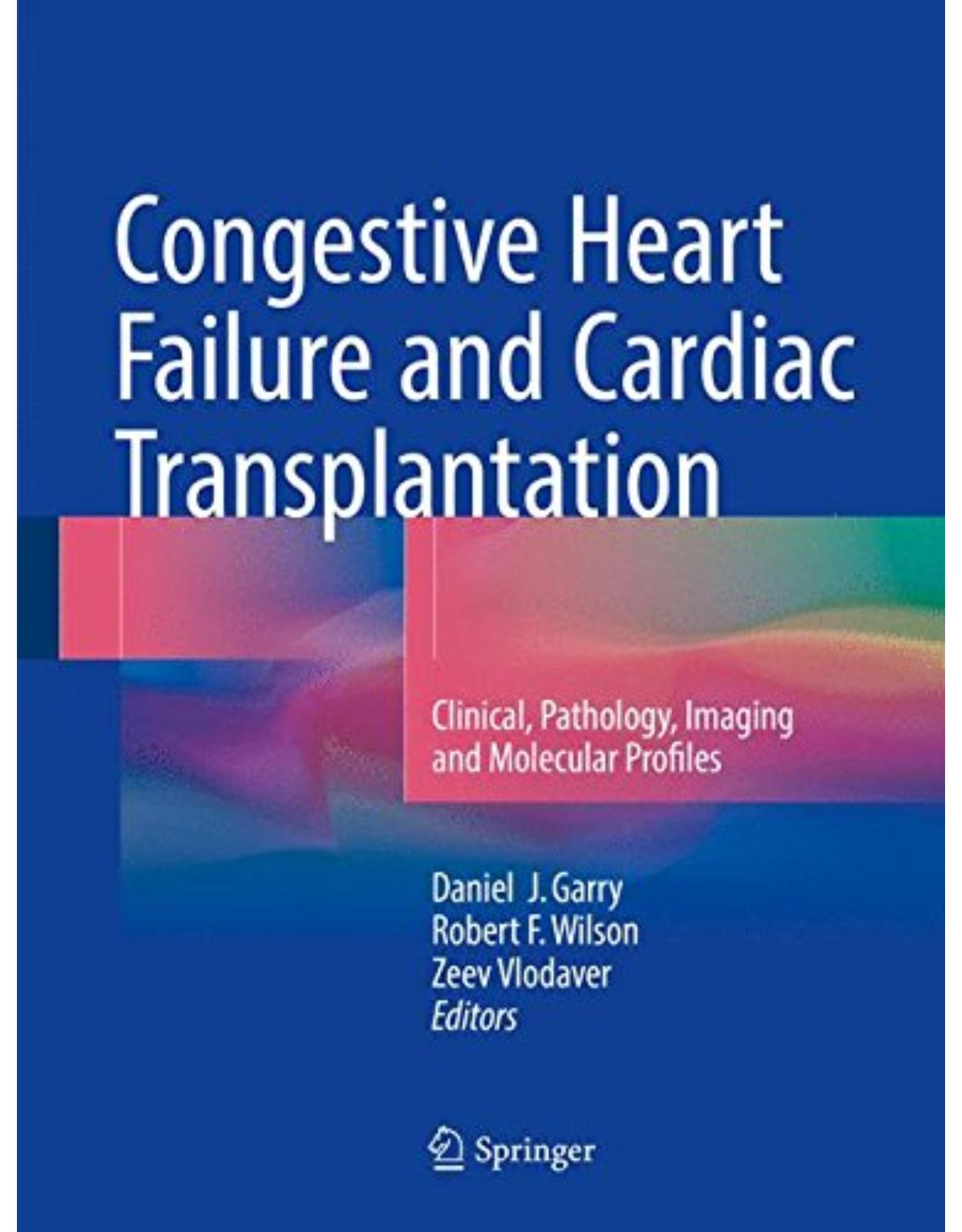
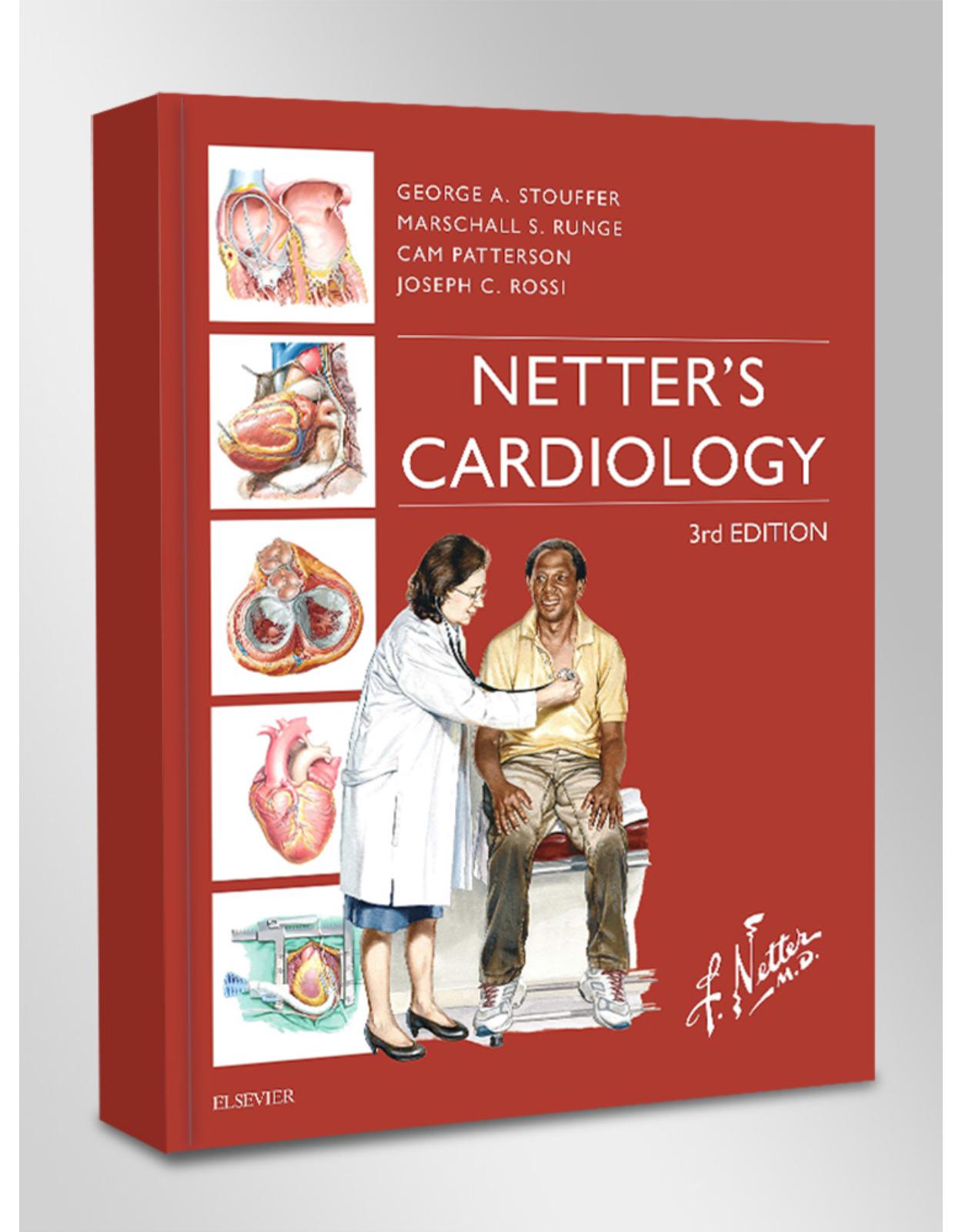
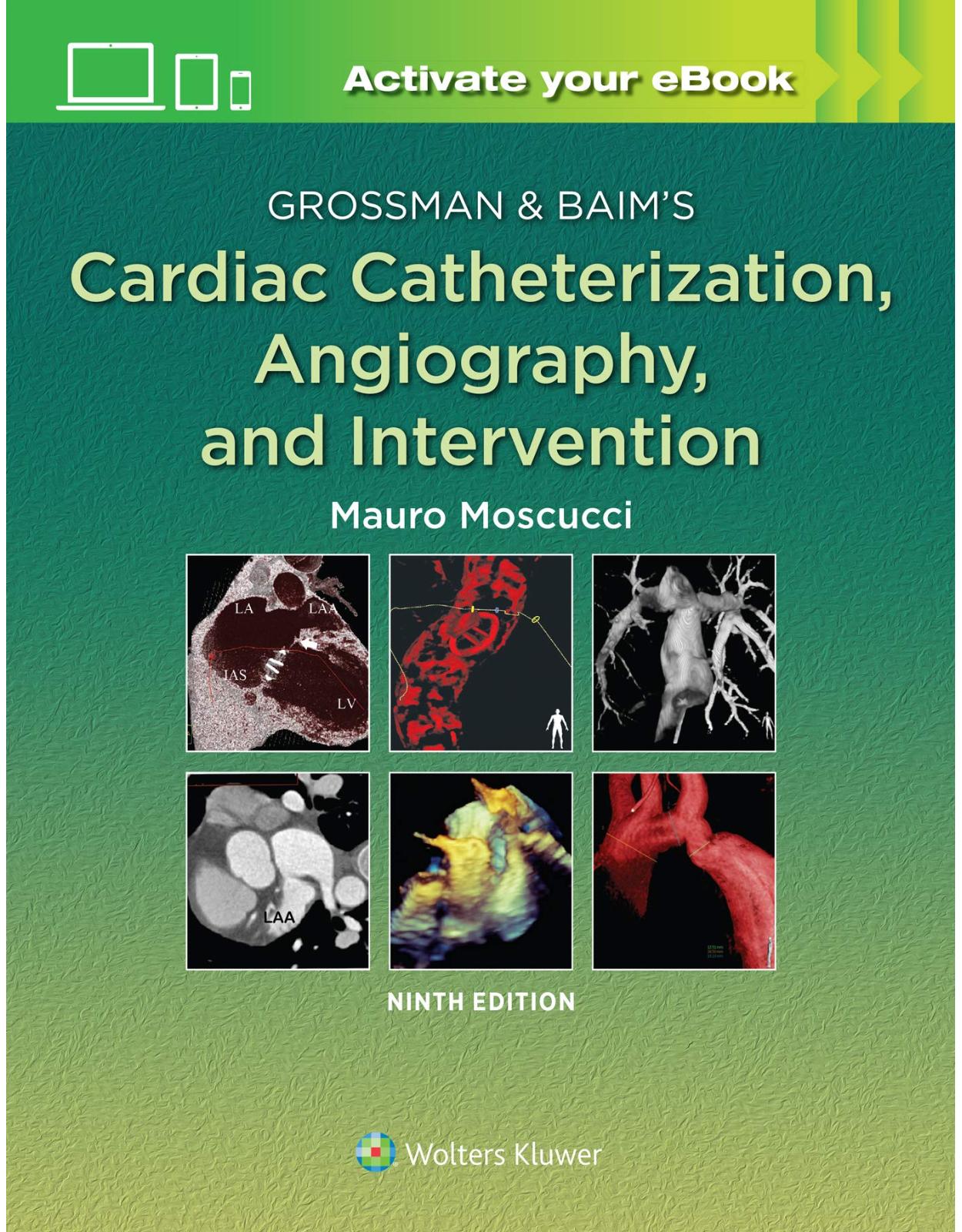
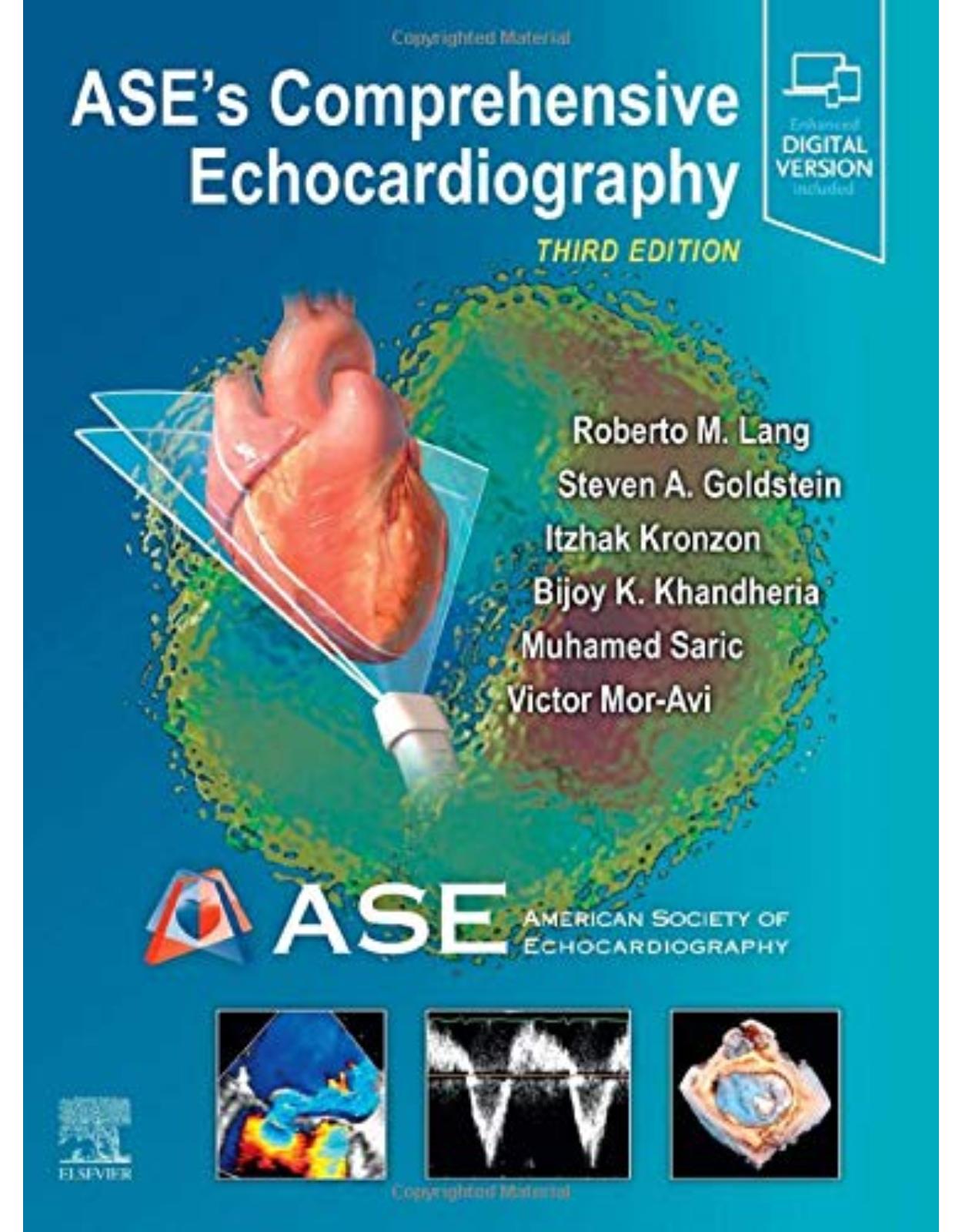
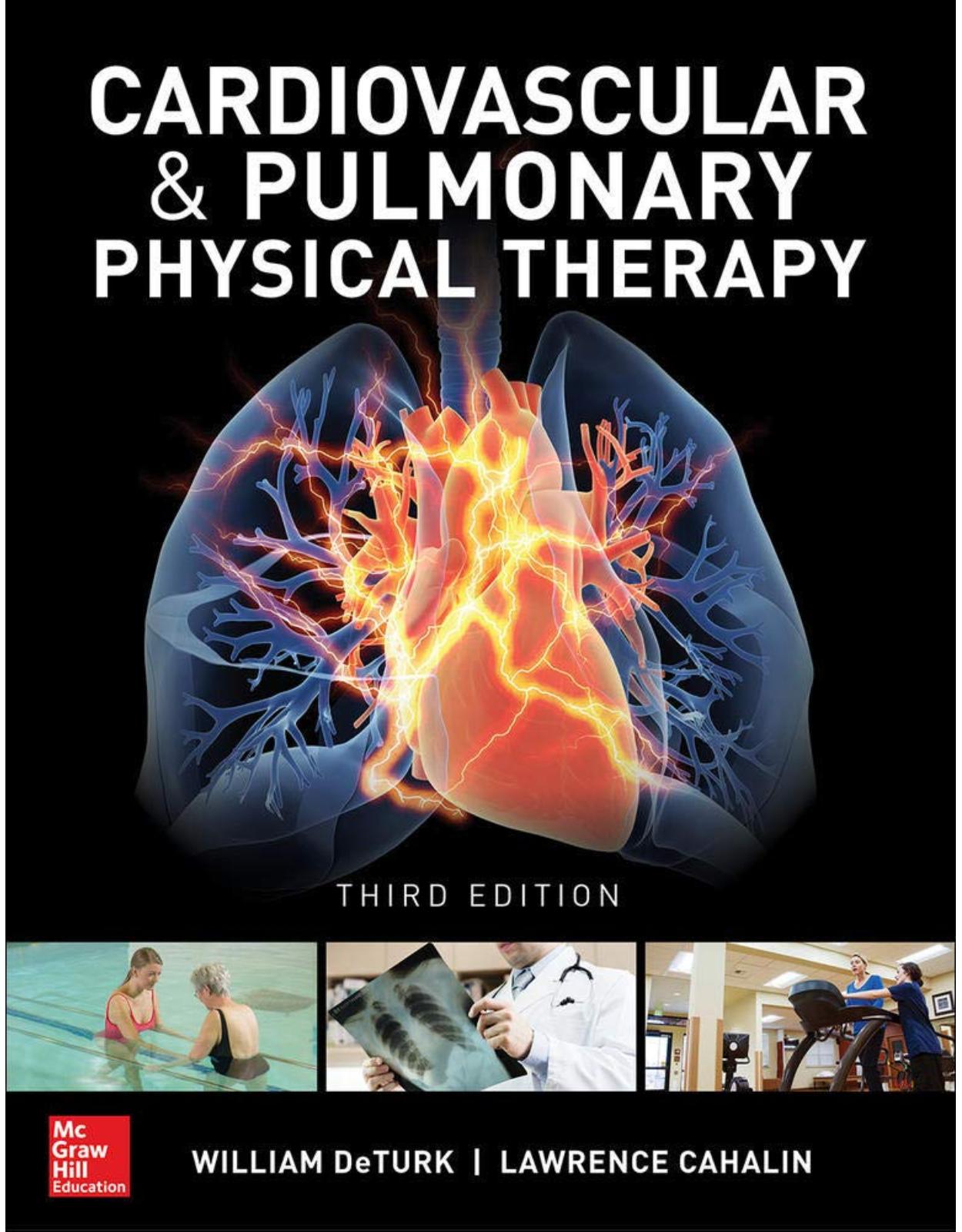
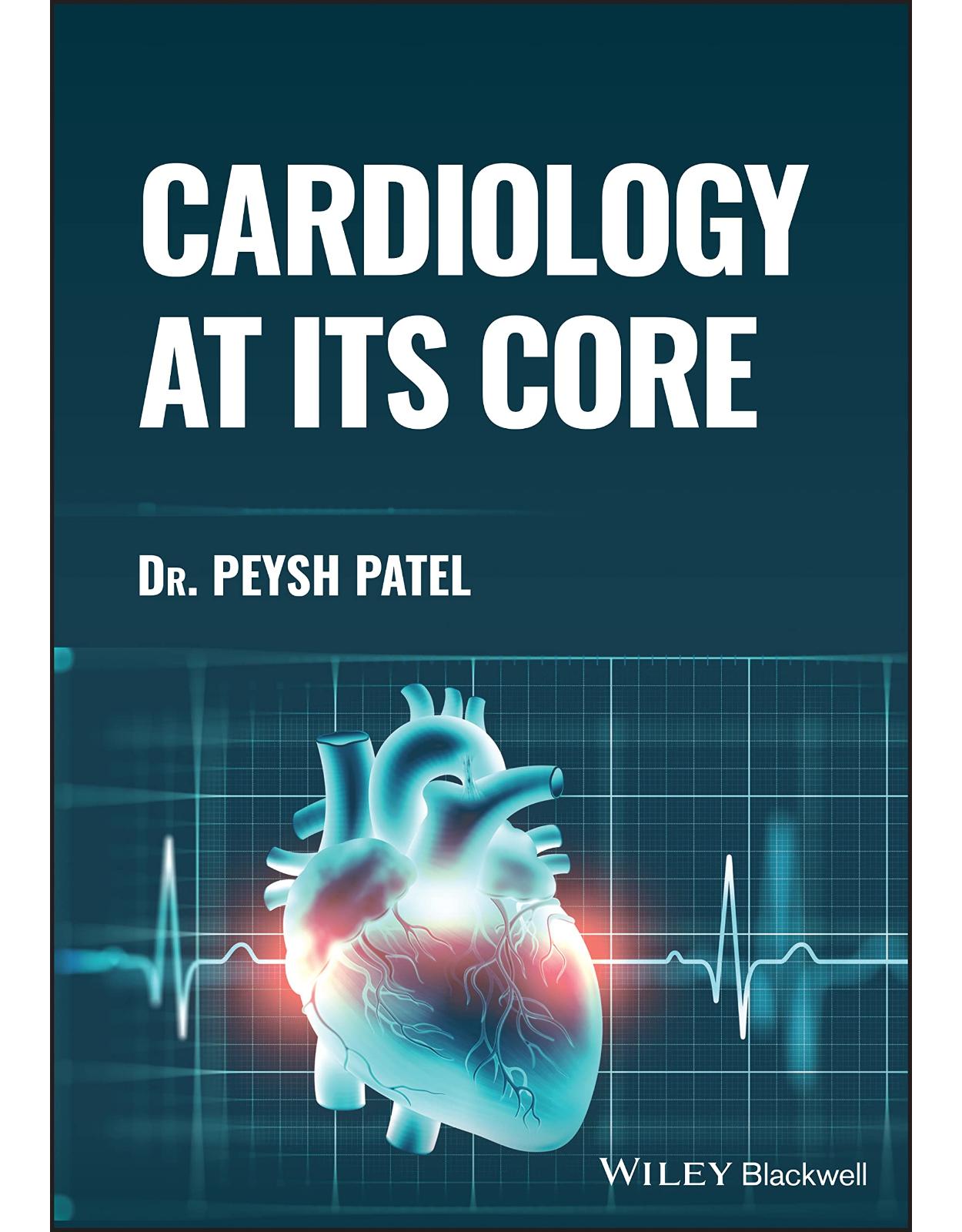

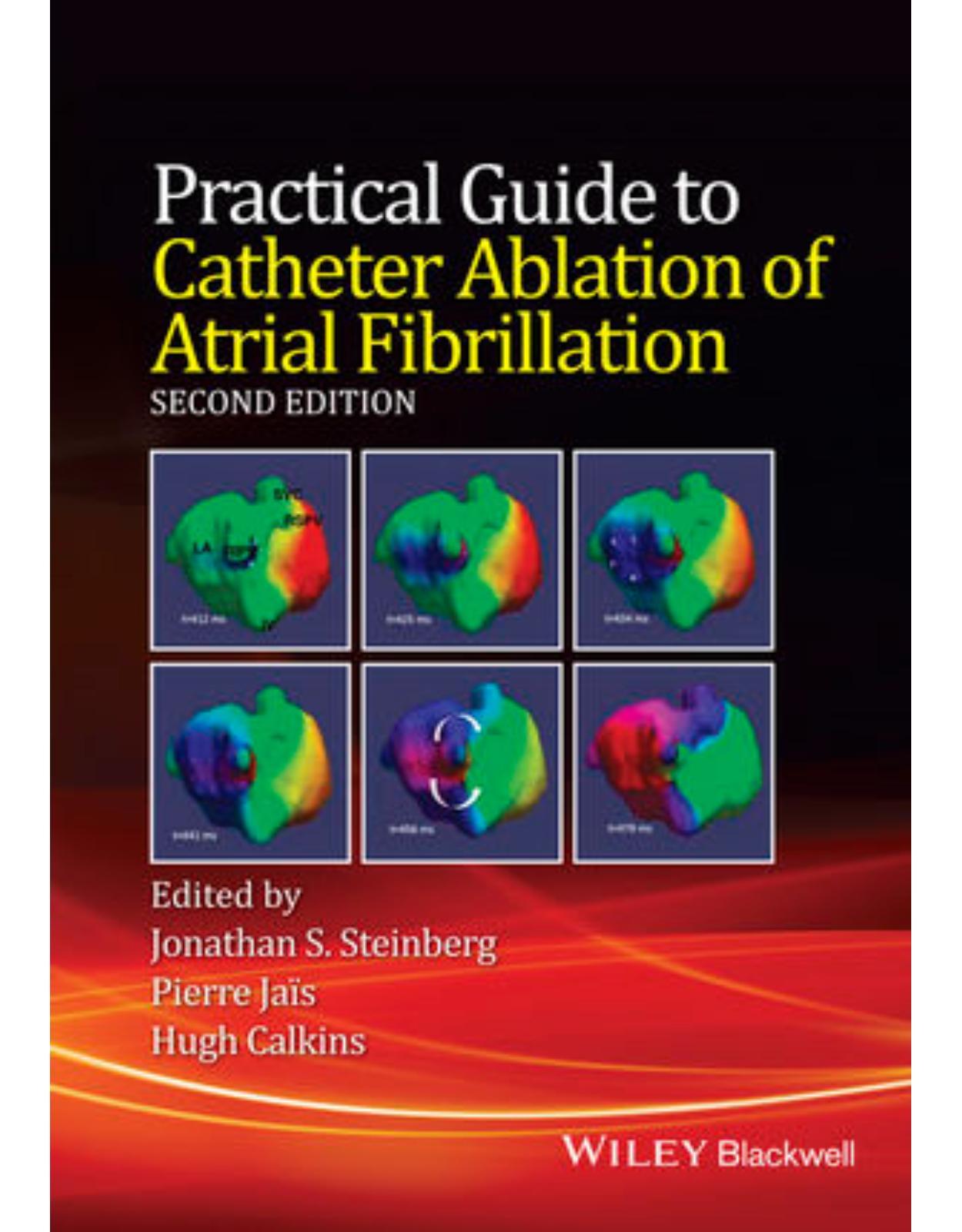
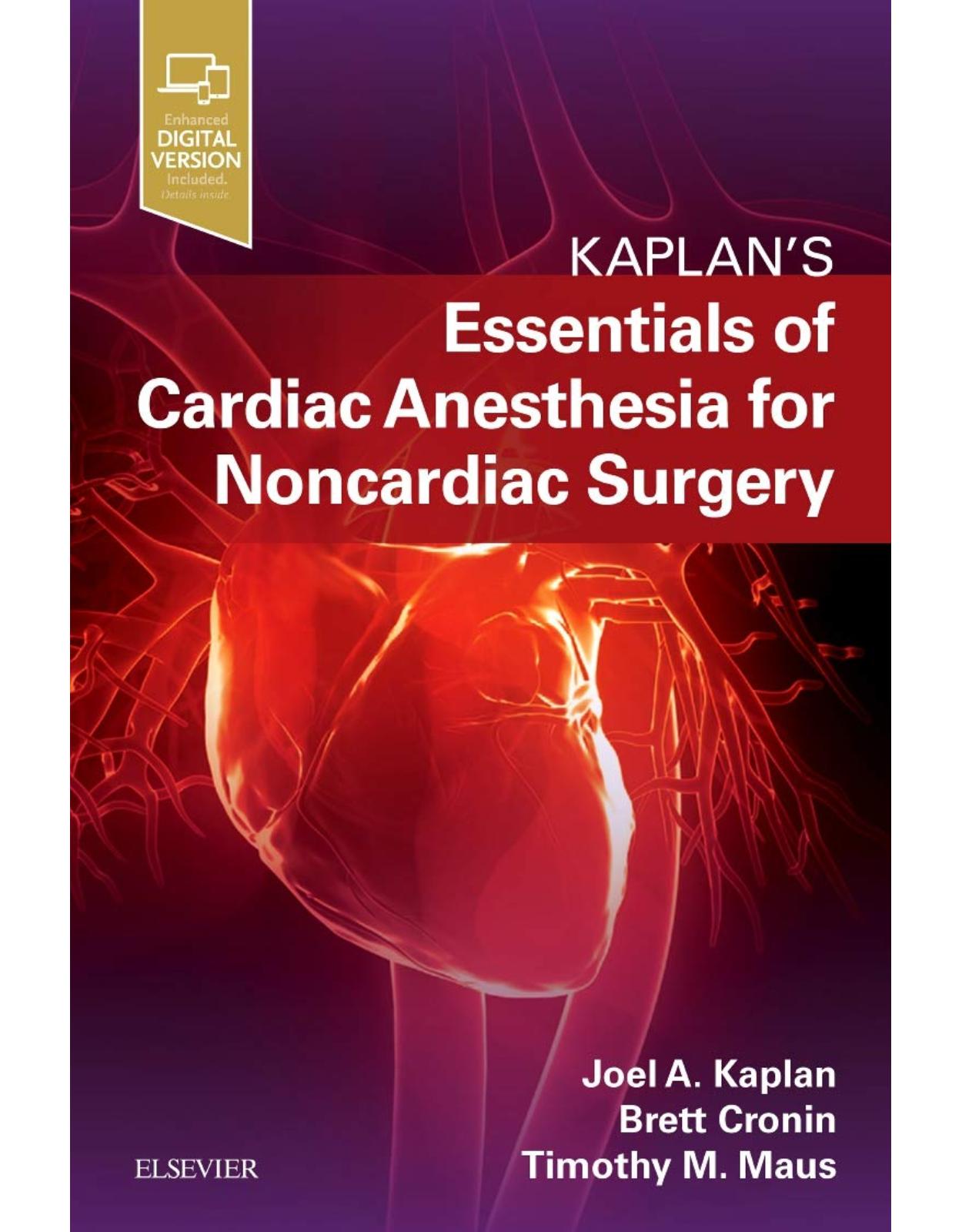
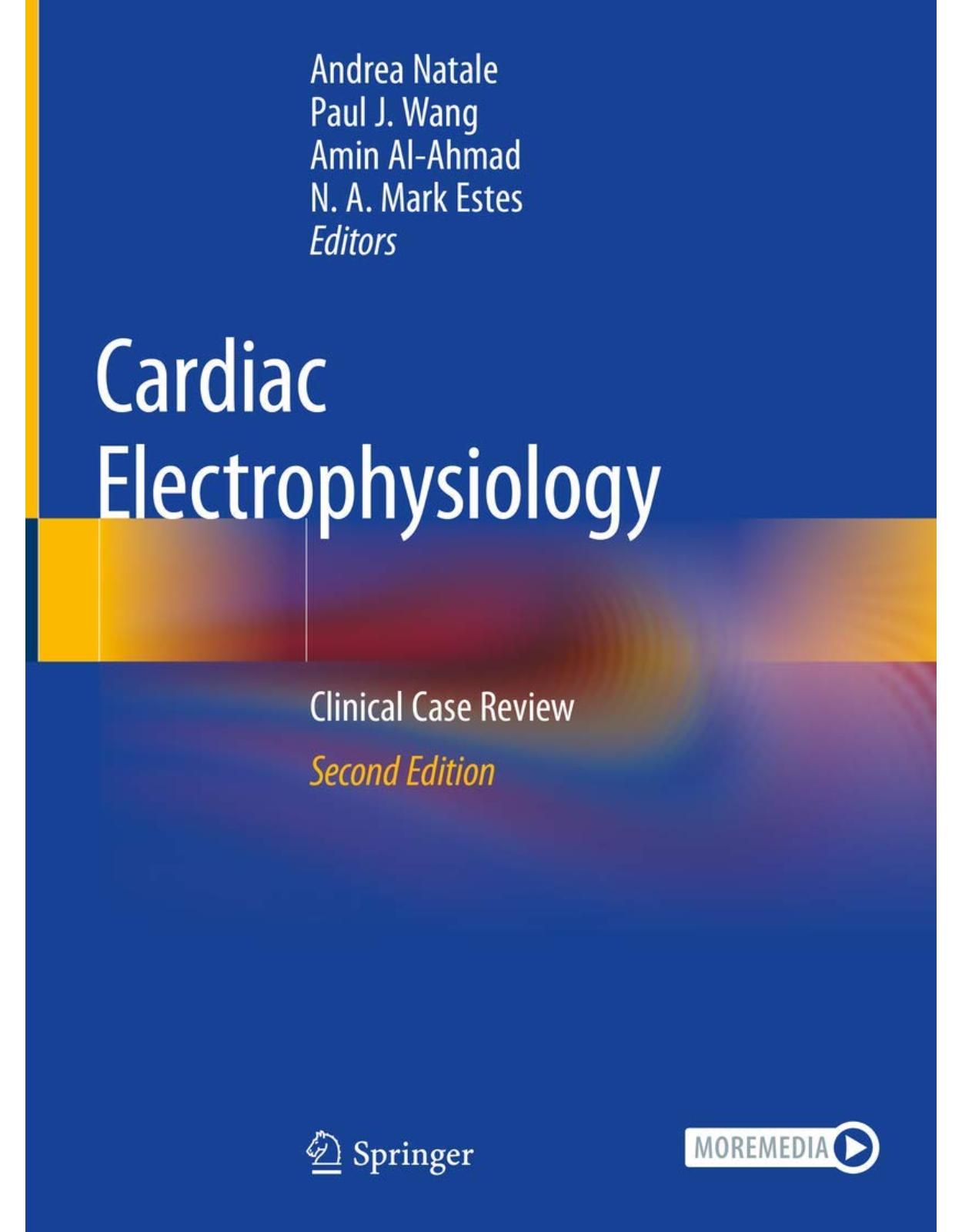
Clientii ebookshop.ro nu au adaugat inca opinii pentru acest produs. Fii primul care adauga o parere, folosind formularul de mai jos.